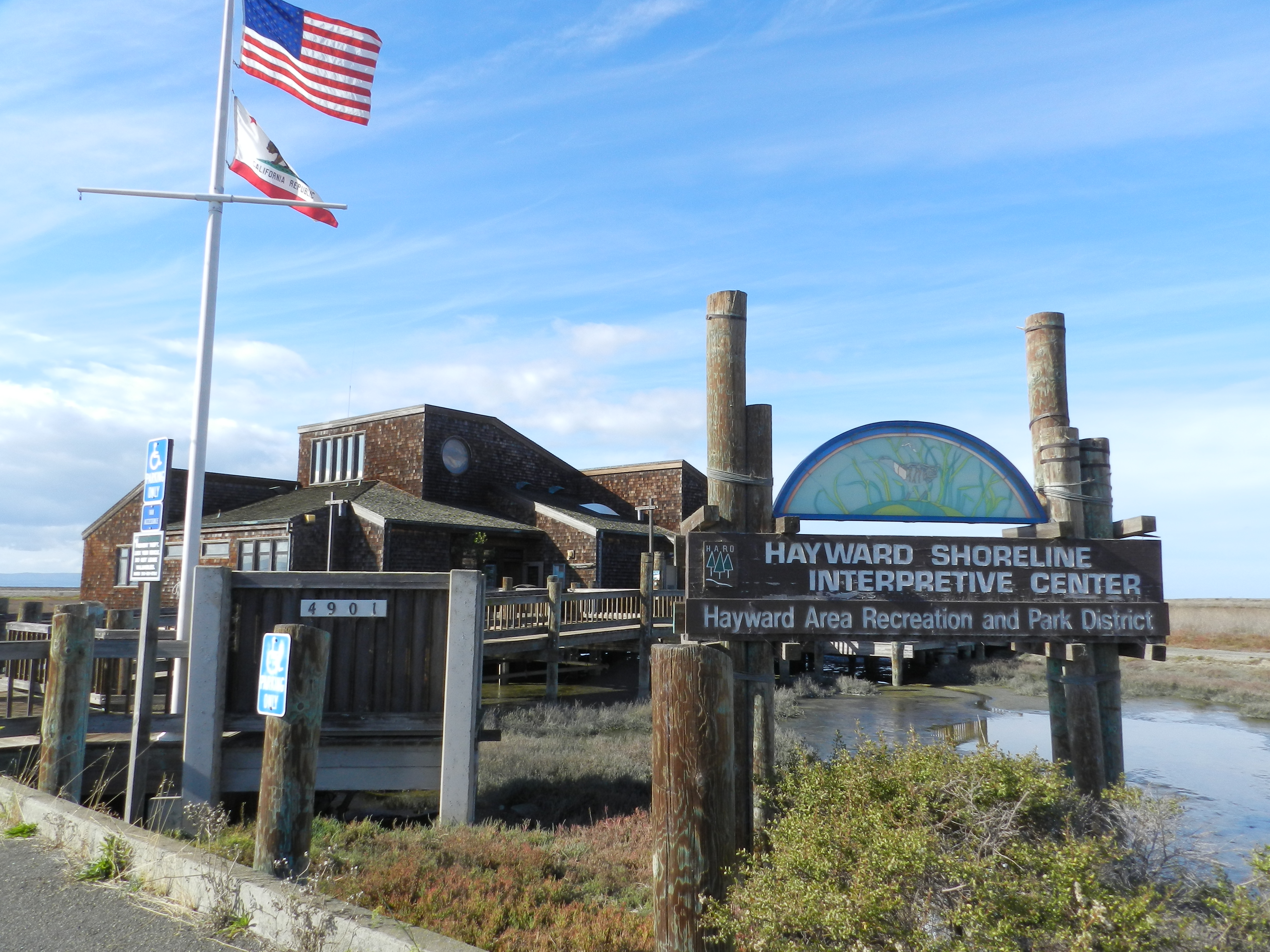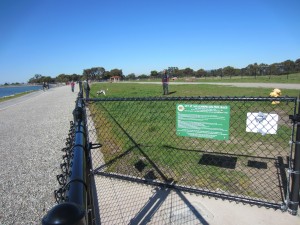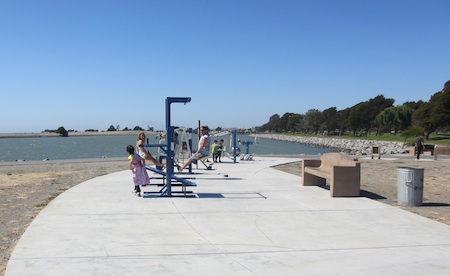
Photo credit: Mercurywoodrose
The San Francisco Bay area has more than one million acres of open space including regional, local and state parks. However, only 25,000 acres of this open space is along the shoreline. The high density of development along the shoreline leaves little space for developing new major shoreline parks, so current and future demand for shoreline recreation will likely need to be met by existing parklands.
The ART Program has evaluated parks and natural areas in each of its local projects around the Bay and conducted specific projects looking at the vulnerability of the East Bay Regional Parks District and the Corte Madera Baylands. Currently, the ART Bay Area regional project is evaluating parks and recreation by assessing the vulnerability of the Bay Trail and Priority Conservation Areas (PCAs) to sea level rise and flooding.
Key findings
Shoreline parks and recreation areas are particularly vulnerable to sea level rise and storm events because of their location, physical characteristics, and the functions they serve. For example, many segments of the Bay Trail throughout the region are vulnerable because they are located on shoreline levees that are susceptible to storm flooding, and some parts of the trail are surfaced with materials that erode easily. Even minor damage or temporary flooding of trails can prevent persons with limited mobility from using damaged portions of the shoreline.

San Leandro Dog Park. Photo credit: BCDC
Sports fields, golf courses and other grassy areas can be permanently damaged if flooded, and landscaping and other plant materials will fail to thrive or die if exposed to salinity. Beaches, such as Crown Memorial State Beach, that are already eroding and require replenishment will increasingly need to be actively managed. Natural areas that are often the focus of shoreline education and interpretation are vulnerable, as the elevations of many tidal marshes in the Bay Area are not expected to keep up with sea level rise and there is very limited space for them to migrate inland. The collective consequences of these vulnerabilities are likely to be significant. There are not always sufficient alternative inland areas to make up for the loss of shoreline parks and recreation resources that currently improve quality of life, support positive public health outcomes, and provide opportunities for the public to access and learn about the Bay.
The ART Bay Area project is partnering with the Natural Capital Project to map recreational use of parks, open spaces, and natural areas throughout the region, and determine how that recreation will change with sea level rise. This will allow us to better understand how and where Bay Area residents are recreating and inform future adaptation strategies.
Additionally, shoreline parks often serve as de facto coastal flood protection for communities. These areas were developed and are managed as park and recreation areas, not coastal flood protection for inland areas. Sea level rise will increase the importance of the role of shoreline parks and natural areas as critical flood and stormwater management, and increase the risks from reliance on ad-hoc flood protection rather than protection that is specifically managed to protect inland communities and facilities.
Early, adaptation actions to respond to these vulnerabilities include using water resistant materials, planting salt tolerant species, prioritizing maintenance and repair of trails that serve people with limited mobility, and protecting or creating high tide refugia within the existing tidal marshes. Other long-term actions, such as developing multi-objective shoreline improvement plans, will take more time and resources, and will require shared decision-making and funding if they are to lead to both recreation and habitat protection.
Project Findings and Materials
- Alameda County Profile Sheet: Parks and Recreation

- Alameda County Existing Conditions and Stressors: Parks and Recreation

- Alameda County Vulnerability and Risk: Parks and Recreation

- ART Alameda County Adaptation Responses for Shorelines

- ART Parks and Recreation Areas Economic Analysis

- Contra Costa County Sector Chapter: Parks and Recreation

- East Bay Regional Parks District ART Project
- ART Bay Area Project

For more information:
- Nick Sander
- Nicolas.Sander@bcdc.ca.gov
- 415-352-3625
